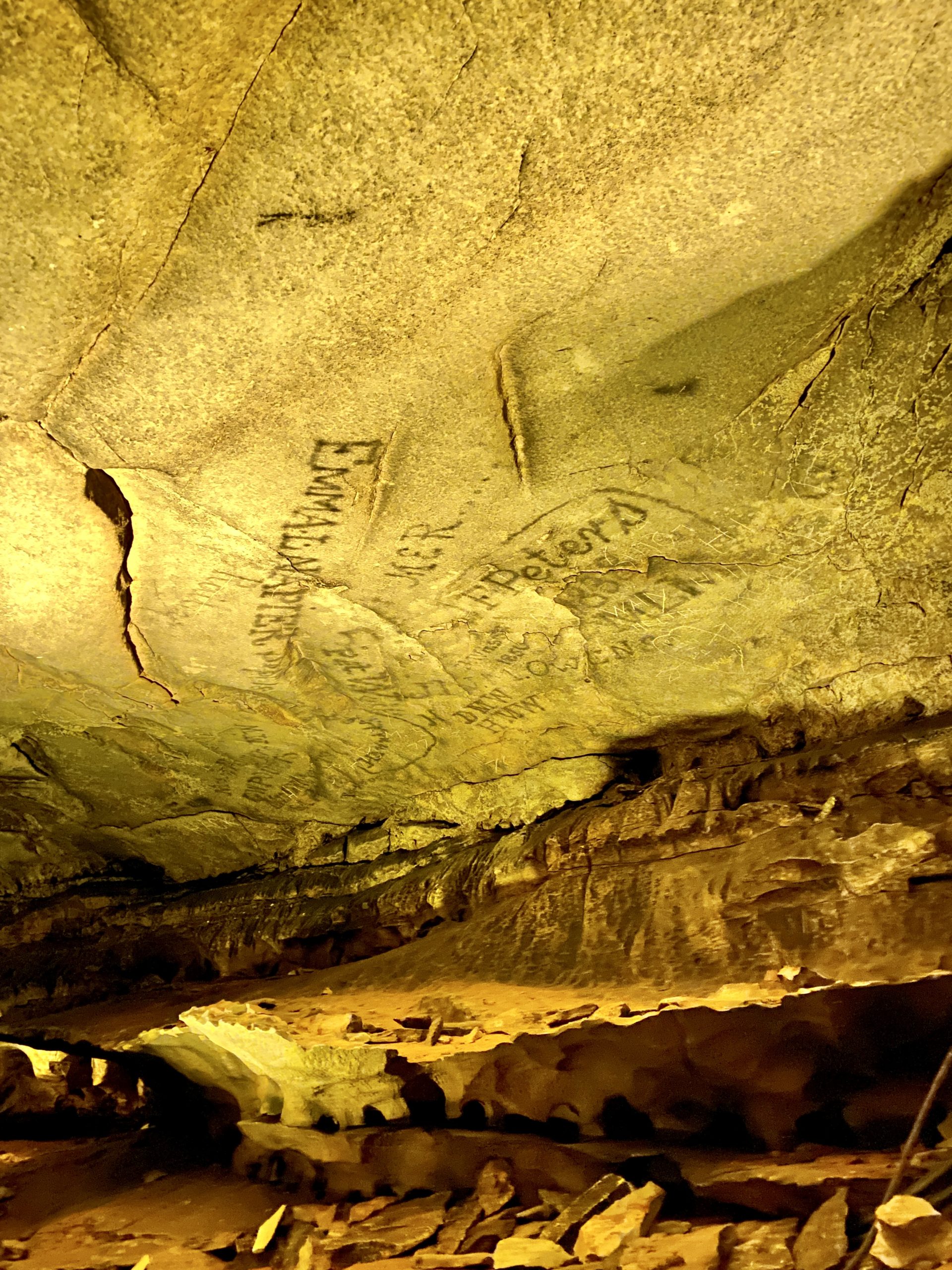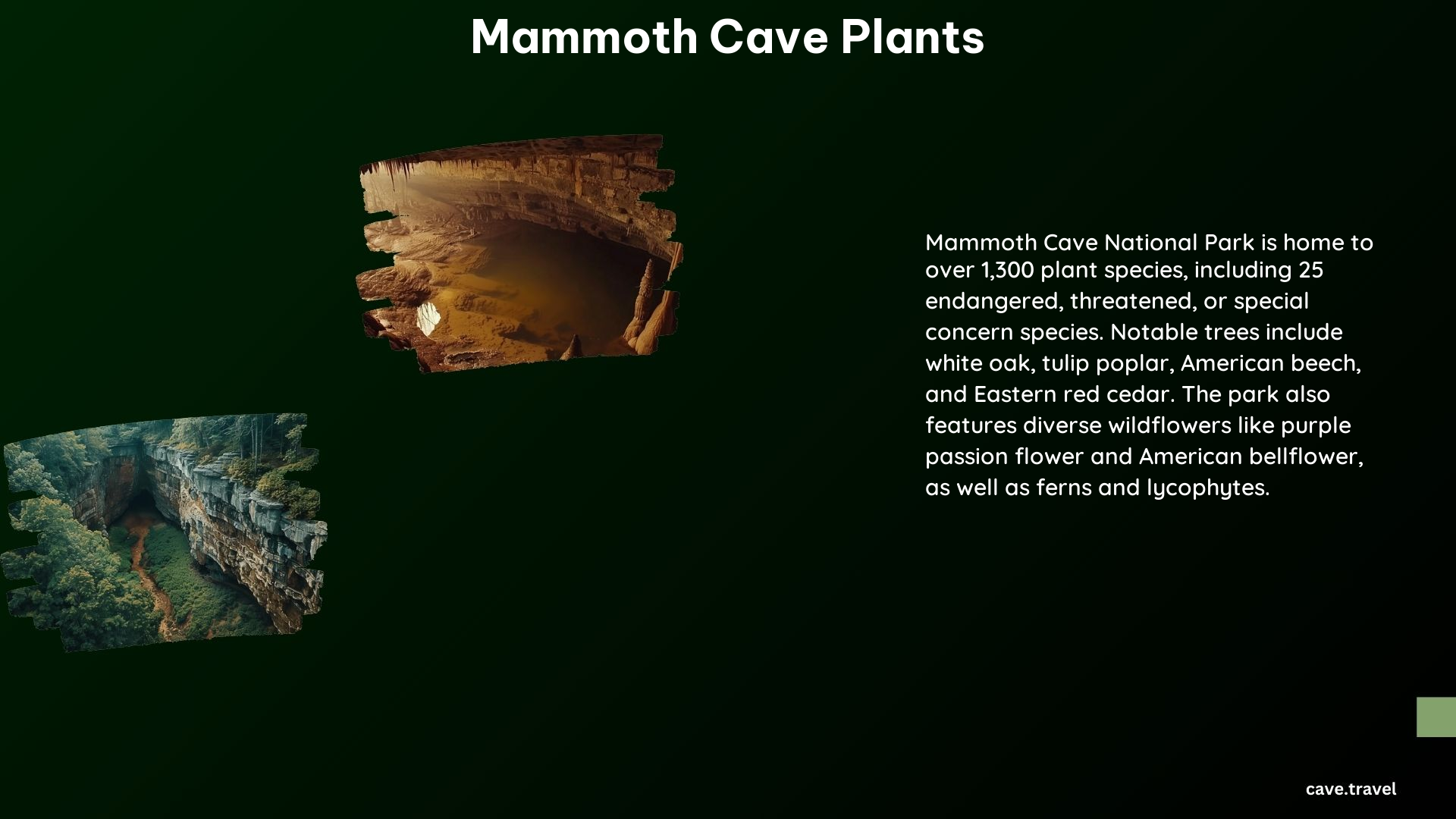Mammoth Cave National Park is a treasure trove of plant life, boasting over 1,300 species within its 52,830 acres. From towering trees to vibrant wildflowers, the park’s diverse microclimates support a wide range of flora, making it a must-visit destination for nature enthusiasts and cavern touring enthusiasts alike.
Common Tree Species in Mammoth Cave

The park is home to several iconic tree species, including:
- White Oak (Quercus alba): A majestic hardwood tree known for its distinctive lobed leaves and acorns.
- Tulip Poplar (Liriodendron tulipifera): A tall, stately tree with unique tulip-shaped flowers and distinctive leaf shape.
- American Beech (Fagus grandiflolia): A graceful tree with smooth, gray bark and distinctive pointed leaves.
- Eastern Red Cedar (Juniperus virginiana): A drought-hardy evergreen with scale-like leaves and bluish-green berries.
Endangered and Threatened Plant Species

Mammoth Cave National Park is home to 25 plant species that are listed as Endangered, Threatened, or of Special Concern by the Kentucky State Nature Preserves Commission. These rare and fragile plants require special attention and conservation efforts to ensure their survival.
Invasive Plant Species
Invasive plant species can pose a significant threat to the delicate ecosystem of Mammoth Cave National Park. During Bat Week, the National Park Service focuses on identifying and controlling harmful invasive plants to protect the critical bat habitat within the park.
Diverse Microclimates
The park’s varied terrain and elevation create a range of microclimates, each supporting a unique assemblage of plant life. Drought-hardy trees like cedars and pines thrive on the ridges, while towering beeches and tulip poplars flourish in the wet valleys.
Vibrant Wildflowers
Mammoth Cave National Park is home to a stunning array of wildflowers, including:
- Purple Passion Flower (Passiflora incarnata): A striking, exotic-looking flower with a unique, intricate structure.
- American Bellflower (Campanulastrum americanum): A delicate, bell-shaped flower that adds a touch of whimsy to the park’s landscape.
- Bigroot Morningglory (Ipomoea pandurata): A robust, trailing vine with large, showy white or pink flowers.
Conservation Efforts
The National Park Service and other organizations are actively involved in monitoring and managing the plant species within Mammoth Cave National Park. Projects like the “Pteridophytes of Mammoth Cave” and “Milkweeds of the National Park Service” help to track and protect the park’s diverse plant life.
Local Resources for Mammoth Cave Plants
For those interested in bringing a piece of Mammoth Cave National Park home, local nurseries like Mammoth Cave Transplants Greenhouse & Nursery offer a wide selection of native plants, including flowers, vegetables, perennials, trees, and shrubs.
By exploring the rich and diverse plant life of Mammoth Cave National Park, visitors can gain a deeper appreciation for the delicate balance of this unique ecosystem. Whether you’re a seasoned botanist or a curious nature enthusiast, the park’s Mammoth Cave plants are sure to captivate and inspire.
References
- https://www.mammothcavetransplants.net
- https://www.inaturalist.org/places/mammoth-cave–2
- https://www.nps.gov/maca/learn/nature/trees.htm
- https://wildflowersearch.org/search?oldstate=gmc%3A37.188%2C-86.101%3Bgms%3A12%3Blocation%3AMammoth-Cave-National-Park%3Belev%3A753%3Btitle%3AMammoth-Cave-National-Park-Wildflowers%3B
- https://www.nps.gov/maca/learn/nature/plants.htm
